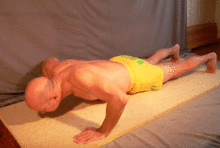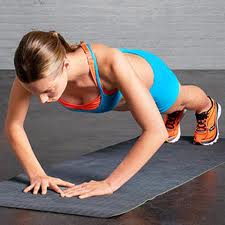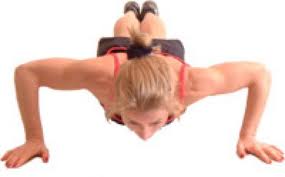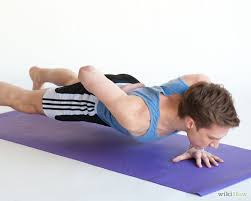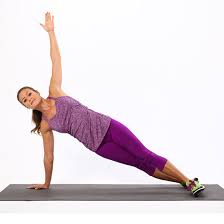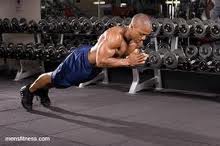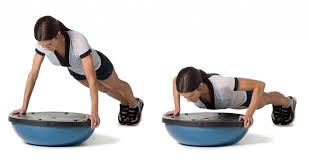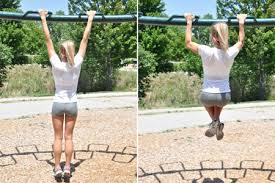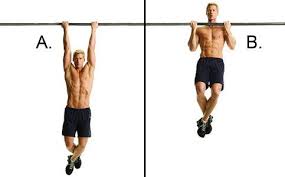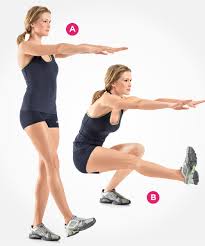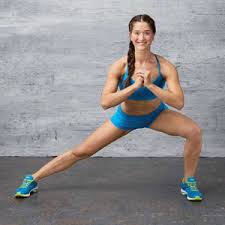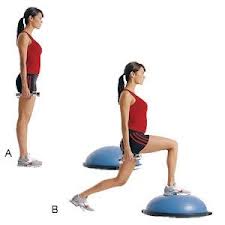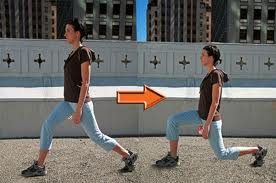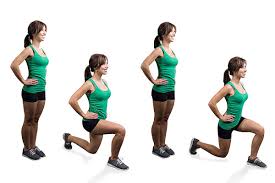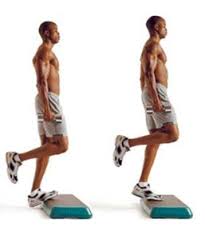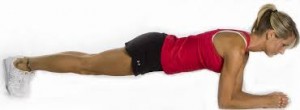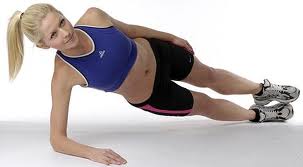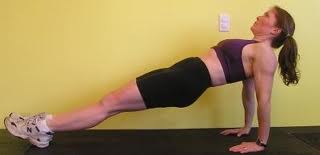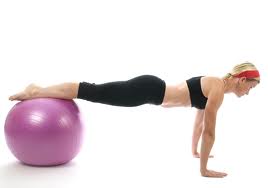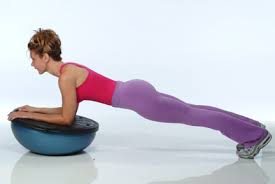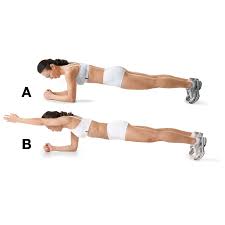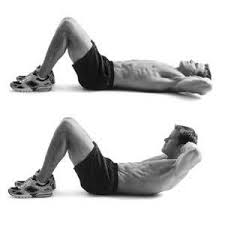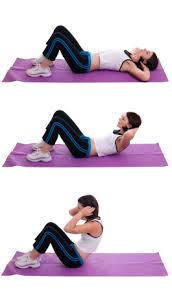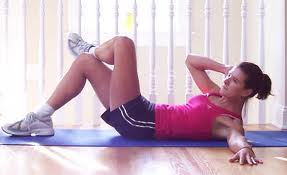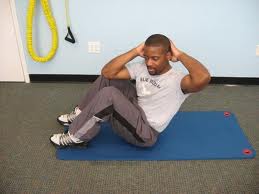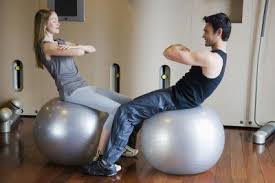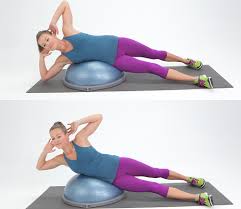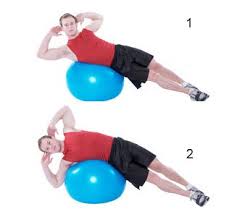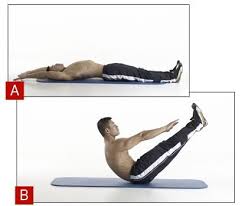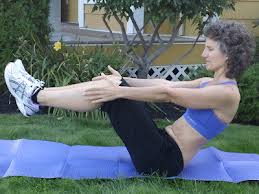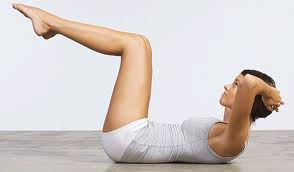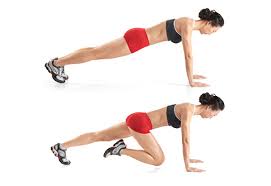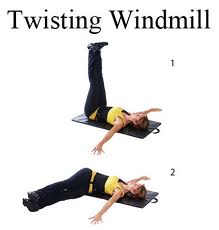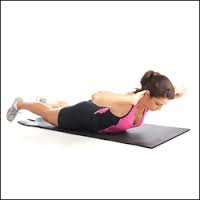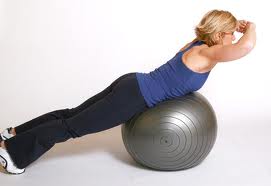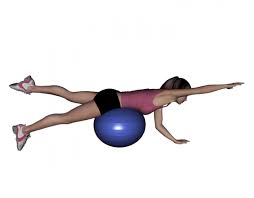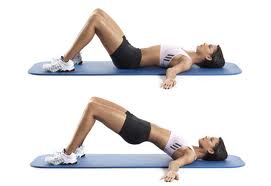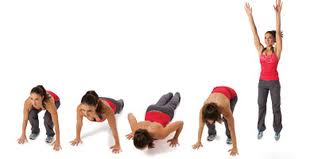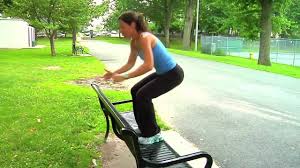Introduction
One of the most common excuses used by people that do not exercise is that they cannot afford the membership of a gym or to buy home exercise equipment. Fortunately, you don’t need to spend money on either of these to get a good muscle strengthening workout. The solution is simple and not fancy, just use your body weight as your resistance tool. By utilizing the “overload” principal of strength training (a greater than normal stress or load on the body is required for training adaptation to take place) and one’s own body weight as the load, an effective strength gaining program can be developed. Exercises such as push-ups, chin-ups, and sit-ups are some of the most commonly known and used 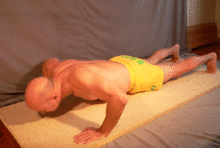 bodyweight strength training exercises. This form of resistance training is excellent at developing tone and endurance in the muscles.
bodyweight strength training exercises. This form of resistance training is excellent at developing tone and endurance in the muscles.
Advantages
1. Because they do not require weights or machines, bodyweight exercises are the ideal choice for individuals who do not have access to these resistance apparatuses.
2. External weights may be incorporated to increase the difficulty or intensity of most bodyweight exercises.
3. These exercise are excellent at “toning” the body and developing strength endurance by increasing the number of repetitions and sets (increasing the load) of a particular exercise.
4. The intensity of body resistance exercises can be increased or decrease by modifying the exercises by using different body positions to do the same exercise. For example, doing push-ups on your knees (easier) vs on your toes, one arm push-ups (harder) vs two arm push-ups or doing wide-arm push-ups (easier) vs narrow positioned (military) type push-ups.
5. Most body weight resistance exercises require, and therefore develope, improved balance, coordination, agility and balance.
6. Most body weight exercises require core engagement and further strengthening of these muscles can occur with the use of unstable surfaces such as Stability Ball or Bosu.
Disadvantages
1. The intensity of the exercise is limited because bodyweight exercises use the persons own weight to provide the resistance for the movement. This makes it difficult to develop increased muscle strength (vs muscle endurance) through muscle hypertrophy (increase size of the muscle) since the resistance load (body weight) is always fairly consistent.
However, as mentioned previously, the intensity of bodyweight exercises can beincreased by including additional weights (such as wearing a weighted vest or holding a barbell, kettlebell, or a weight plate) or by altering the exercise position to put your body at a leverage disadvantage (such as elevating the feet on a stability ball, bench or hanging from straps during a push-up) or to using only one limb or and incorporating isometrics into the exercise (holding a position for a period of time like 30 seconds).
2. Plateauing. The body adapts to the stresses you put on it and to avoid plateaus in strength gains you must constantly change the type of exercise and resistance that you are using. Even though you can modify body resistance exercises to a certain degree you are much more limited than if you had access to free weight and leveraged machines.
3. Boredom. Once again, the limitation in the type and routine of exercises that you can do with body resistance exercises leans itself to repetition and possible boredom.
Common Bodyweight Resistance Exercises.
Most of these exercises have several variations/modifications that can be performed to make them more or less challenging, or to train different muscles.
|
Name |
Muscle Group |
Description |
| Chest | ||
| Push-upsRegular
|
Chest (Pectoralis Major and Minor), Triceps and Biceps | In a prone (face down) position, the body is raised and lowered using the arms while the back remains straight and the toes remain on the ground.. |
| Push-up Modifications:Easier: | Push-up Modifications:Easier: | |
Knee Assisted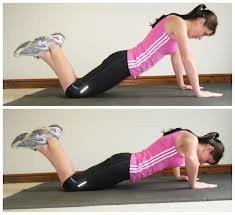 |
1. Knees are resting on the ground. | |
Push Against a Wall |
2. Push-up against a bench or wall. Hands are at shoulder level. | |
| Push-up Modifications: Harder: | Push-up Modifications: Harder: | |
| Feet on an Incline | 1. Feet on an incline – the upper body must now support more weight. | |
| 2. Dive bomber –simulate going under a fence as you do your push-up. | ||
| Diamonds | 3. Diamond– hands shaped as a diamond (thumbs and index fingers touch) under the chest. | |
| Wide-fly
|
4. Wide-fly – hands are 3” wider on each side | |
| Military | 5. Military– hands underneath the shoulders & arms and elbows tight to the ribs | |
| 6. Two-Twitch– Perform 4 fast & 4 slow (4 count) twice | ||
| 7. Side-to-side– walk to one side and do push up & then walk to opposite side & do push-up | ||
| One Arm | 8. One arm – do push-up using only one arm. | |
| One-arm balance | 9. One-arm balance– following a push-up twist so one arm is pointing skyward and balance on one arm & then repeat on the other side. | |
| Clap push-ups | 10. Clap push-up– clap hands in mid-air between push-ups | |
| Bosu or Stability Ball (Unstable Surface)Bosu
Stability Ball
|
11. Bosu or Stability Ball– Push-up on unstable surface. Hands or feet can be on the unstable surface. | |
| Arms | ||
Dips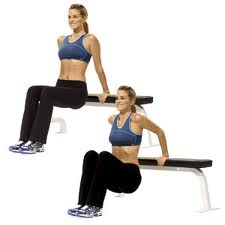 |
Triceps and shoulders (Trapezius) | Dips on Bench/Chair– facing away from bench & hands resting on bench. Arms extended and the shoulders positioned above the hands. Lower the body until the arms are bent at a 90° angle & then extend elbows again. |
| Upper Back and Arms | ||
| Pull-ups/Chin-ups (you need a bar to hang from)Pull-ups
Chin-ups
|
Upper back ( rear Deltoids, Trapezius, Latissimus Dorsi) Biceps | Pull-ups– hands face away from the body.Chin-ups– hands face toward the body.
Hanging from a bar the body is pulled up until the elbows are bent and the head is higher than the hands. The closer the hands are during a chin-up, the more the emphasis is on the biceps |
| Hips | ||
Lateral Leg Raises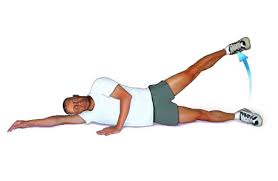 |
Lateral hip stabilizers (Gluteus Medius, Tensor Fascia Lata) | Lateral Leg RaiseLying flat on your side with legs extended you lift the top leg upwards to about 60°.
(You may use rubber bands around the ankles for additional resistance). |
Hip Extensions |
Hip extensors (Gluteus Medius and Maximus) | Hip Extension– Lying on your hands and knees lift one foot/leg toward sky keeping the knee bent and then repeat with the other foot/leg. |
| Legs | ||
| 1. Squats | Quads (thighs), Hamstrings, Glutes | Squats – Standing up straight, bend the legs at the knees and hips and lower the buttocks between the legs. The torso will lean forward to maintain balance. |
| Squat Modifications: | Squat Modifications: | |
Unstable SurfaceBosu |
1. Unstable surface – With a Bosu you may use the ball side (blue) or flat side (black).You may also put an object in your hands for additional resistance. | |
| Single Leg | 2. Single leg squat –This requires good balance and coordination.This may also be done on an unstable surface | |
| 2. Lunges | Quads (thighs), Hamstrings, Glutes | The person stands on flat surface and steps forward with one leg and bends the forward knee down until the it is at a 90° angle and the back knee almost touches the floor while keeping the upper body straight (minimal forward bend). You then push back with the front leg to a standing position and repeats the exercise with the alternate leg. |
| Lunge Modifications: | Lunge Modifications: | |
| Lunge with a Twist | 1. Lunge with a Twist– you do a lunge with a twist to the forward leg side | |
| Lateral Lunge | 2. Lateral lunge– you lunge to one side and then the other. | |
| Unstable Surface (Bosu) | 3. Unstable surface (Bosu)-You can do the forward or lateral lunge by stepping onto the unstable surface. Requires more balance and coordination. | |
| Back Lunge
|
4. Back Lunge– you step backwards and then bend you knee. Requires more balance | |
| Walking Lunge | 5. Walking Lunge– do a forward lunge as you step forward but rather than push back to straighten up you straighten the front leg as you move forward in a walking motion. | |
Stationary Balance Lunge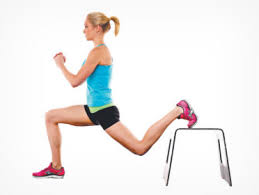 |
6. Stationary Balance Lunge– back leg on a bench or chair as you perform the lunge | |
Calf RaisesFlat Surface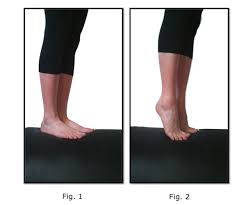 Raised Surface Raised Surface
|
Gastrocs and Soleus | Standing calf raises are executed with both feet on a flat surface or raised surface (heel lower than the toes). The exercise is performed by raising the heel as high as possible. |
| Calf Raise Modifications: | Calf raised Modifications: | |
| On legged calf Raise | 1. One legged calf raise – lift one leg off the ground and raise the body with your other leg. | |
| Core | ||
1. PlanksHands on Ground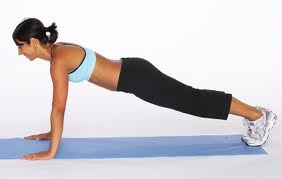
|
Core (abdominals, back and shoulders) | Lying on the stomach and lifting the body by keeping the toes and forearms or hands on the ground and hold for 30 seconds or more. |
| Plank Modifications: | Plank Modifications: | |
| Side Planks | 1. Side Planks – Lie on forearm or hand. The feet maybe stacked on top of each other (harder) or behind each other (increased stability) | |
| Supine (face up) Planks | 2. Supine (face up) Planks – it is important to keep the hips elevated (no sagging) | |
| Planks on Unstable SurfaceStability Ball
Bosu
|
3. Plank on Unstable Surface – such Stability Ball or Bosu | |
| One Am Plank | 4. One arm plank – lift one arm off the supporting surface, hold and then alternate to the opposite arm | |
| One Leg Plank | 5. One leg/foot plank – lift one leg/foot off the supporting surface, hold and then alternate to the opposite leg/foot | |
One Leg Plank on Unstable Surface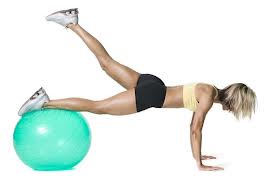 |
6. Unstable Surface | |
| 2. Crunches & Sit-upsCrunch
Sit-up
|
Rectus Abdominus, Internal and external obliques | Crunches– Lying face up on the floor; shoulders are curled towards the pelvis while the lower back remains flat against the floor. Focus is put on contracting the abdominal muscles.Sit-ups– Lying with the back on the floor, with the knees bent in an attempt to reduce stress on the back muscles and spine, and then elevating both the upper and lower vertebrae from the floor until everything superior to the buttocks is not touching the ground. |
|
Crunch/Sit-up Modifications |
Crunch/Sit-up Modifications: |
|
| Oblique Crunch
|
1. Oblique crunches – you twist (elbow to opposite knee) as you come up. Lower back stays on the ground. | |
| Oblique Sit-up | 2. Oblique Sit-up – you twist as you come up. The lower back comes off the floor. | |
| Russian Twist | 2. Russian Twist– starts with knees bent and feet off ground and in upper sit-up position and then twist to each side repetitively. | |
| Unstable SurfaceSit-up on Stability Ball
Crunch on Bosu Side Lying Crunch on Bosu Side Lying Crunch on Stability Ball
|
3. Unstable surface– for Sit-up/Crunches | |
| “V” Sit-ups | 4. “V” sit-ups – start lying flat on mat with arms extended over head and legs extended. Lift legs up 60° and arms up 60° then lower | |
| Table Top Sit-ups
Table Top Crunches
|
5. Sit-ups/crunches in Table top position – Hips and knees are bent 90°. | |
| Bicycle | 6. Bicycle– Start with lifting legs off the ground and chest in crunch position. Flex one knee to chest and lift opposite elbow to meet that knee and then repeat with other knee and elbow. | |
| Mountain Climber | 7. Mountain Climber – Lying face down on your hands and toes you bend one knee and bring it up to your chest and then do that same with the opposite leg. | |
| Twisting Windmill | 8. Twisting Windmill – legs extended and lifted up 90° and then dropped to one side and then the other. | |
Straight Leg Raise |
9. Straight Leg Raises– Lie on the floor on your back. Keep the lower back in contact with the floor and place hands to sides or under lower back for support. Lift legs upward as far as possible. Lower down to starting position slowly and with control. Make sure the back stays flat on floor and that the abdominal muscles are tight. | |
| 3. Back Extensions Exercises | Erector Spinae | |
| Back Extensions | 1. Back Extensions – lying flat with hands behind the head lift chest off floor. | |
| Superman | 2. Superman – lying flat with arms extended forward lift chest and legs (thighs) off floor and hold. | |
| The Bird | 3. The Bird – face down and resting on hands and knees. Extend one arm out in front and lift and extend opposite leg back and hold. Then repeat with other arm and leg. | |
| Unstable SurfacesBack Extension on Stability Ball
The Bird on Stability Ball
|
4. Unstable surfaces – Each of the above exercises can be done on an unstable surface such as a Bosu or stability ball. | |
| Hip Raises
Hip Raise on Unstable Surface |
4. Hip raise– Lying flat and face up. Bend knees 90° and then lift hips up as high as possible and hold. | |
| Combination Exercise | ||
1. Burpee’s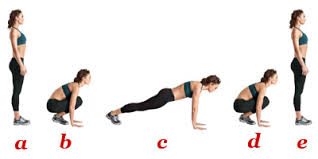 |
Legs (Quads, Hamstrings), Hips (Hip Flexors and Extensors), Core, Shoulders | From a standing position, the person drops to a squat with hands on floor (count 1), thrusts legs back to assume push-up position (count 2), returns to squat (count 3), and returns to standing position (count 4). |
| Burpee Modification: | Burpee Modification: | |
Burpee with Push-up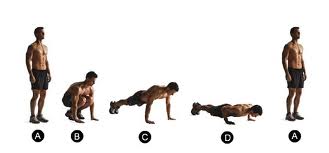 Burpee with Push-up and Jumping Jack Burpee with Push-up and Jumping Jack
|
1. Do a push-up when the hands are on the floor and/or a jumping jackafter you stand up.Note – you can alternate doing a push-up or jumping jack on each rep or do what every combination you would like. | |
| Dynamic Exercises | ||
Plyometrics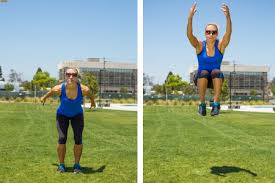
|
Legs | Plyometrics, also known as “jump training” or “plyos”, are body weight resistance exercises based around having your leg muscles exert maximum force in as short a time as possible, with the goal of increasing both speed and power. Plyometrics is an advance lower body exercise routine that requires not only strength but balance, coordination, agility and endurance. |
Conclusion
Though there is a limit in the type and variety of body weight resistance exercises you can do and a limit in the absolute strength gains that can be achieved, body weight resistance training is a convenient and effective way to tone and develop muscle endurance. It is cheap; versus buying a gym membership or home weight equipment, and portable since the resistance you use (body weight) goes where ever you go. Professional athletes utilize body resistance exercises to complement their weight resistance routines and they are used extensively in physical rehabilitation programs. They are can be used safely at any age and can be easily modified to meet the fitness levels of any person. Body weight resistance exercises also help develop flexibility, balance, agility and coordination which make this form of exercise ideally suited for the older adult in their fall prevention programs.
If you’d like more info please contact Mike.

